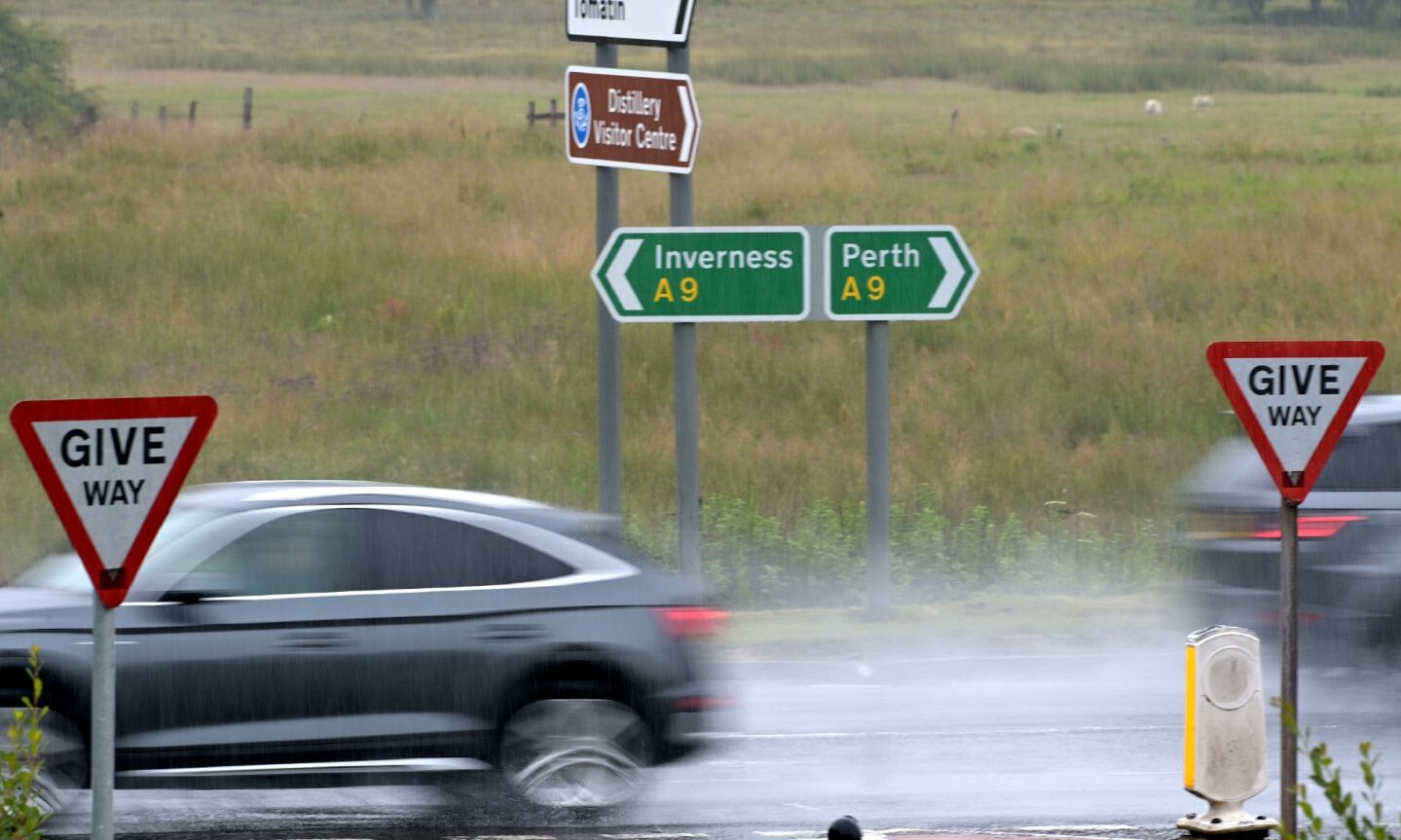Thousands of van drivers caught speeding on deadly A9 as courier …
Thousands of van drivers have been caught speeding on the A9 in a major police crackdown – with one courier firm admitting its staff routinely go over the limit on the deadly road.
Commercial vehicles were targeted on the A9 between Dunblane and Inverness this summer.
In just a few weeks between July and August, nearly 3,200 light goods vehicles were hit with a notice of intended prosecution (NIP).
That was about three times the number issued on the A9 in the previous three-and-a-half years.
The figures came to light after business owners noticed their drivers getting caught speeding on several occasions in a short space of time.
‘My drivers went faster on A9 as they were never getting done for speeding’
One company boss has admitted his staff have regularly driven over the limit – 60mph for vans on dual carriageways and 50mph on single carriageways – because they “never get done for it”.
The businessman, who runs a Glasgow-based company and wanted to stay anonymous, said: “We’re unsure why this (rise in speeding fines) happened – I don’t think the cameras were working properly.
“My guys have been driving on that stretch for a long time and they’ve never had a problem.
“We deliver between Glasgow, Stirling, Inverness and Aberdeen early in the morning when the roads are quiet.
 The speed cameras operate on the stretch between Inverness and Dunblane. Image: Sandy McCook/DC Thomson
The speed cameras operate on the stretch between Inverness and Dunblane. Image: Sandy McCook/DC Thomson
“My drivers thought those (higher) speeds were safe as it’s 4am/5am and the roads are quiet.
“Initially, when the cameras came, they were all driving at 60mph, but as time went on they got faster as they weren’t getting done for it.
“One of my drivers got three tickets in a single journey and I’ve had over 20 come through the door.
“I just want to know the reason why it’s suddenly changed – we’ve been in business for 20 years and never had a problem.”
13 deaths on A9 in 2022
The A9 is dualled between Dunblane and Pass of Birnam, north of Perth, but is largely single carriageway through Highland Perthshire and the Highlands.
A total of 13 people died on the A9 last year[1] – the highest number for 20 years – with pressure being put on the Scottish Government to speed up the dualling of the road[2].
Safety Camera Scotland confirmed the average speed cameras had been switched on in “safety priority areas” between July 17 and 23 to support a police crackdown on offences involving commercial vehicles.
The agency also said it has the ability to select which cameras are in operation at any time.
 Average speed cameras near Gleneagles. Image: Shutterstock
Average speed cameras near Gleneagles. Image: Shutterstock
In total, 4,411 vehicles were caught speeding in that time – the vast majority of them being light goods vehicles – with nearly 3,200 issued with NIPs.
The figures were released through a freedom of information request, seen by The Courier.
Councillor Grant Laing, leader of Perth and Kinross Council, said: “I’m surprised by the figures and would like to see more information about the data.
‘Alarming’ A9 speeding figures
“People should respect fellow road users and citizens by sticking to the speed limit and driving to the conditions.
“There also maybe needs to be more education that vans have lower speed limits than other vehicles.”
Bailie Claire Mclaren, who represents the council’s Strathtay ward, described the figures as “alarming”.
She added: “Action is long overdue.”
Muriel Cockburn a Highland councillor, whose ward the A9 runs through, says driving at night with limited visibility brings significant safety risks.
She said: “Every road user must abide by the law pertaining to road safety both for themselves and others.
“Night time driving brings with it safety risks such as wildlife (deer) and visibility challenges
“Thankfully we have systems in place for catching and identifying people breaking the law.”
‘Taking any risks in the dark simply isn’t worth it’
 Laura Hansler says speeding at night to avoid HGVs “isn’t worth it” Image: Sandy McCook/DC Thomson
Laura Hansler says speeding at night to avoid HGVs “isn’t worth it” Image: Sandy McCook/DC Thomson
A9 safety campaigner Laura Hansler says the likely reason drivers are being caught out is the new radar system on each gantry which operates 24/7 and is “more accurate” than cameras.
She says the radar system is so small that drivers may believe that there is no speed-detecting equipment mounted on the gantries and therefore “push their luck”.
She said: “It’s a very dangerous attitude to have. The new technology is there for a reason and people shout about wanting extra policing on the road but the police are working in partnership with this new technology.
“So just because you can’t see it, doesn’t mean it’s not there. It’s on 24/7 to ensure the safety of HGV drivers and car users alike.”
Mrs Hansler noted that companies may be sending drivers up and down the A9 out with normal driving hours to capitalise on how quiet the road is.
“Unfortunately, everybody tries to use the A9 when they think it will be quiet, but the A9 is never quiet and the A9 is never safe.
“It’s probably more ambiguous at night, taking any risks in the dark simply isn’t worth it.”
A spokesperson for government agency Transport Scotland said: “The operation of the system is wholly and solely a matter for the safety camera unit and Police Scotland, who have confirmed there has been a recent period of targeted action on the A9.”
References
- ^ A total of 13 people died on the A9 last year (www.pressandjournal.co.uk)
- ^ pressure being put on the Scottish Government to speed up the dualling of the road (www.thecourier.co.uk)